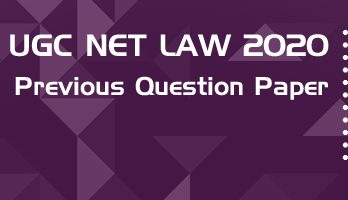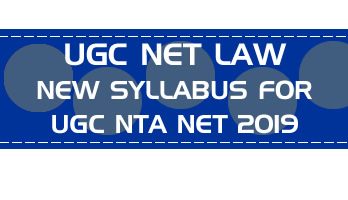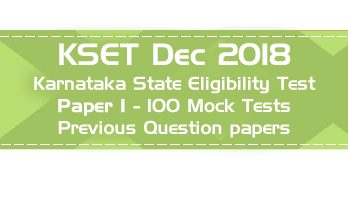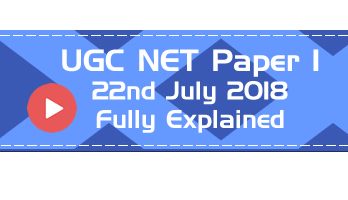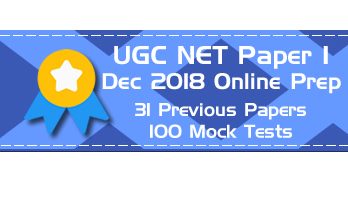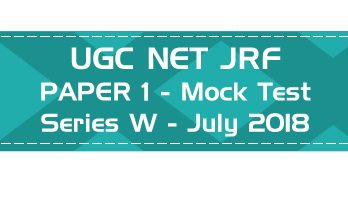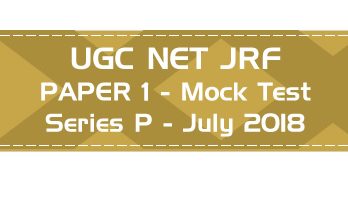- Latest Pattern Mock Tests including comprehension based questions
- Previous Question Papers with Answer Keys - From 2004 till the most recent exam
- 75 Full Length Mock Tests - New Pattern Paper II, with 100 questions each
- 50 Mini Practice Mock tests - with 25 questions each
- Unlimited Practice - New Questions in every attempt of all mocks
- Questions & Answer Choices randomly shuffled in every attempt for better practice
- Database of over 11000+ MCQs covering the entire syllabus
- Unlimited access and practice for one year from the date of purchase
- Accessible 24 x 7 via Smart-Phone browsers and Desktops
Authentic Feedback from previous LawMint users :
I got AIR 21 in CLAT PG. Thank you so much. Your mocks helped me a lot in my preparation 🙂 - Ayushi Jain
I have subscribed to your CLAT PG program and got AIR 36 in this year CLAT PG. I have also secured AIR 54 in AILET PG exam. I would like to thank you. Your mock paper really helps a lot - Shrashank Tripathi
I would like to thank you for the CLAT PG LLM COURSE. Practising mock tests there helped me in getting confidence and hence I was able to get AIR 45 in CLAT PG LLM - Akshay Awasthi
A year back, I relied on the IIT Kharagpur RGSOIPL mock test series by LawMint to prepare for my RGSOIPL entrance test. Few months back, I relied on your UGC NET Law series to prepare for UGC NET. I was the topper of the RGSOIPL entrance, and have cracked JRF in UGC NET. All thanks to LawMint - Anshuman Sahoo
"I got AIR 18 in CLAT PG and General Category rank 28 in AILET PG. I want to thank you for helping me practice well in controlled conditions from any place. It gave me a lot of confidence and I took the tests while travelling too. I also made it to IIT Kharagpur." - Vinodharani
"Lawmint has been of great help to me in securing AIR 25 in AILET PG and AIR 29 in CLAT PG examinations. The subjective and objective approach of the test series kept me up to date with the latest exam pattern." - Bhawna Nanda
"I, Nimmy Saira Zachariah joined you clat test series. I cleared AILET PG with 30th rank. Your test series were of immense help as it gave me clear idea of where my preparations stand thank you once again law mint." - Nimmy S Z
"Hey guys. Where do I start? If I thought that getting AIR 59 in Clat PG was it, then how wrong I was. With Lawmint now I have cracked UGC NET as well." - Joyanta Chakraborty
Note : Answer Keys to all Previous Question Papers published on LawMint are available to registered users of LawMint.com Online Practice Packs.
Check out all the HECI NTA NET or UGC CBSE NET Paper 1 previous question papers here : Previous Papers & Mock Tests
Note : UGC has rolled out a revised syllabus for both Papers 1 & 2 from Jan 2019 onward.
1. The post-industrial society is designated as
– Information society
– Technology society
– Mediated society
– Non-agricultural society
2. The initial efforts for internet based communication was for
– Commercial communication
– Military purposes
– Personal interaction
– Political campaigns
3. Internal communication within institutions done through
– LAN
– WAN
– EBB
– MMS
4. Virtual reality provides
– Sharp pictures
– Individual audio
– Participatory experience
– Preview of new films
5. The first virtual university of India came up in
– Andhra Pradesh
– Maharashtra
– Uttar Pradesh
– Tamil Nadu
6. Arrange the following books in chronological order in which they appeared. Use the code given below:
(i) Limits to Growth
(ii) Silent Spring
(iii) Our Common Future
(iv) Resourceful Earth
– (i), (iii), (iv), (ii)
– (ii), (iii), (i), (iv)
– (ii), (i), (iii), (iv)
– (i), (ii), (iii), (iv)
7. Which one of the following continents is at a greater risk of desertification?
– Africa
– Asia
– South America
– North America
8. “Women are closer to nature than men.” What kind of perspective is this?
– Realist
– Essentialist
– Feminist
– Deep ecology
9. Which one of the following is not a matter a global concern in the removal of tropical forests?
– Their ability to absorb the chemicals that contribute to depletion of ozone layer.
– Their role in maintaining the oxygen and carbon balance of the earth.
– Their ability to regulate surface and air temperatures, moisture content and reflectivity.
– Their contribution to the biological diversity of the planet.
10. The most comprehensive approach to address the problems of man-environment interaction is one of the following:
– Natural Resource Conservation Approach
– Urban-industrial Growth Oriented Approach
– Rural-agricultural Growth Oriented Approach
– Watershed Development Approach
11. The major source of the pollutant gas, carbon mono-oxide (CO), in urban areas is
– Thermal power sector
– Transport sector
– Industrial sector
– Domestic sector
12. ln a fuel cell driven vehicle, the energy is obtained from the combustion of
– Methane
– Hydrogen
– LPG
– CNG
13. Which one of the following Councils has been disbanded in 2013?
– Distance Education Council (DEC)
– National Council for Teacher Education (NCTE)
– National Council of Educational Research and Training (NCERT)
– National Assessment and Accreditation Council (NAAC)
14. Which of the following statements are correct about the National Assessment and Accreditation Council?
1. It is an autonomous institution.
2. It is tasked with the responsibility of assessing and accrediting institutions of higher education.
3. It is located in Delhi.
4. It has regional offices.
– 1 and 3
– 1 and 2
– 1, 2 and 4
– 2, 3 and 4
15. The power of the Supreme Court of India to decide disputes between two or more States falls under its
– Advisory Jurisdiction
– Appellate Jurisdiction
– Original Jurisdiction
– Writ Jurisdiction
16. Which of the following statements are correct?
1. There are seven Union Territories in India.
2. Two Union Territories have Legislative Assemblies
3. One Union Territory has a High Court.
4. One Union Territory is the capital of two States.
– 1 and 3 only
– 2 and 4 only
– 2, 3 and 4 only
– 1, 2, 3 and 4
17. Which of the following statements are correct about the Central Information Commission?
1. The Central Information Commission is a statutory body.
2. The chief Information Commissioner and other Information Commissioners are appointed by the president of India.
3. The Commission can impose a penalty upto a maximum of Rs 25,000
4. It can punish an errant officer.
– 1 and 2 only
– 1, 2 and 4
– 1, 2 and 3
– 2, 3 and 4
18. Who among the following conducted the CNN-IBN – The Hindu 2013 Election Tracker Survey across 267 constituencies in 18 States?
– The Centre for the Study of Developing Societies (CSDS)
– The Association for Democratic Reforms (ADR)
– CNN and IBN
– CNN, IBN and The Hindu
19. In certain code TEACHER is written as VGCEJGT. The code of CHILDREN will be
– EKNJFTGP
– EJKNFTGP
– KNJFGTP
– None of the given choices
20. A person has to buy both apples and mangoes. The cost of one apple is Rs 7/- whereas that of mango is Rs 5/-
If the person has Rs. 38, the number of apples he can buy is
– 1
– 2
– 3
– 4
21. A man pointing to a lady said, “The son of her only brother is the brother of my wife,” The lady is related to the man as
– Mother’s sister
– Grand mother
– Mother-in-law
– Sister of Father-in-law
22. In this series 6, 4, 1, 2, 2, 8, 7, 4, 2, 1, 5, 3, 8, 6, 2, 2, 7, 1, 4, 1, 3, 5, 8, 6.
How many pairs of successive numbers have a difference of 2 each?
– 4
– 5
– 6
– 8
23. The mean marks obtained by a class of 40 students is 65; The mean marks of half of the students is found to be 45. The mean marks of the remaining students is
– 85
– 60
– 70
– 65
24. Anil is twice as old as Sunita. Three years ago, he was three times as old as Sunita. The present age of Anil is
– 6 years
– 8 years
– 12 years
– 16 years
25. Which of the following is a social network?
– amazon.com
– eBay
– gmail.com
– Twitter
26. The population information is called parameter while the corresponding sample information is known as
– Universe
– Inference
– Sampling design
– Statistics
27. Read the following passage carefully and answer the question : Heritage conservation practices improved worldwide after the International Centre for the Study of the Preservation and Restoration of Cultural Property (ICCROM) was established with UNESCO’s assistance in 1959. The inter-governmental organisation with 126 member states has done a commendable job by training more than 4,000 professionals, providing practice standards, and sharing technical expertise. In this golden jubilee year, as we acknowledge its key role in global conservation, an assessment of international practices would be meaningful to the Indian conservation movement.
Consistent investment, rigorous attention, and dedicated research and dissemination are some of the positive lessons to imbibe. Countries such as Italy have demonstrated that prioritising heritage with significant budget provision pays. On the other hand, India, which is no less endowed in terms of cultural capital, has a long way to go. Surveys indicate that in addition to the 6,600 protected monuments, there are over 60,000 equally valuable heritage structures that await attention. Besides the small group in the service of Archaeological Survey of India, there are only about 150 trained conservation professionals. In order to overcome this severe shortage the emphasis has been on setting up dedicated labs and training institutions.
It would make much better sense for conservation to be made part of mainstream research and engineering institutes, as has been done in Europe. Increasing funding and building institutions are the relatively easy part. The real challenge is to redefine international approaches to address local contexts. Conservation cannot limit itself to enhancing the art-historical value of the heritage structures, which international charters perhaps overemphasise. The effort has to be broad-based : It must also serve as a means to improving the quality of life in the area where the heritage structures are located.
The first task therefore is to integrate conservation efforts with sound development plans that take care of people living in the heritage vicinity. Unlike in western countries, many traditional building crafts survive in India, and conservation practices offer an avenue to support them. This has been acknowledged by the Indian National Trust for Art and Cultural Heritage charter for conservation but is yet to receive substantial state support. More strength for heritage conservation can be mobilised by aligning it with the green building movement. Heritage structures are essentially eco-friendly and conservation could become a vital part of the sustainable building practices campaign in future.
The outlook for conservation heritage changed
– after the establishment of the International Centre for the Study of the Preservation and Restoration of Cultural Property
– after training the specialists in the field.
– after extending UNESCO’s assistance to the educational institutions.
– after ASI’s measures to protect the monuments.
28. Read the following passage carefully and answer the question : Heritage conservation practices improved worldwide after the International Centre for the Study of the Preservation and Restoration of Cultural Property (ICCROM) was established with UNESCO’s assistance in 1959. The inter-governmental organisation with 126 member states has done a commendable job by training more than 4,000 professionals, providing practice standards, and sharing technical expertise. In this golden jubilee year, as we acknowledge its key role in global conservation, an assessment of international practices would be meaningful to the Indian conservation movement.
Consistent investment, rigorous attention, and dedicated research and dissemination are some of the positive lessons to imbibe. Countries such as Italy have demonstrated that prioritising heritage with significant budget provision pays. On the other hand, India, which is no less endowed in terms of cultural capital, has a long way to go. Surveys indicate that in addition to the 6,600 protected monuments, there are over 60,000 equally valuable heritage structures that await attention. Besides the small group in the service of Archaeological Survey of India, there are only about 150 trained conservation professionals. In order to overcome this severe shortage the emphasis has been on setting up dedicated labs and training institutions.
It would make much better sense for conservation to be made part of mainstream research and engineering institutes, as has been done in Europe. Increasing funding and building institutions are the relatively easy part. The real challenge is to redefine international approaches to address local contexts. Conservation cannot limit itself to enhancing the art-historical value of the heritage structures, which international charters perhaps overemphasise. The effort has to be broad-based : It must also serve as a means to improving the quality of life in the area where the heritage structures are located.
The first task therefore is to integrate conservation efforts with sound development plans that take care of people living in the heritage vicinity. Unlike in western countries, many traditional building crafts survive in India, and conservation practices offer an avenue to support them. This has been acknowledged by the Indian National Trust for Art and Cultural Heritage charter for conservation but is yet to receive substantial state support. More strength for heritage conservation can be mobilised by aligning it with the green building movement. Heritage structures are essentially eco-friendly and conservation could become a vital part of the sustainable building practices campaign in future.
The inter-government organization was appreciated because of
– increasing number of members to 126.
– imparting training to professionals and sharing technical expertise.
– consistent investment in conservation.
– its proactive role in renovation and restoration
29. Read the following passage carefully and answer the question : Heritage conservation practices improved worldwide after the International Centre for the Study of the Preservation and Restoration of Cultural Property (ICCROM) was established with UNESCO’s assistance in 1959. The inter-governmental organisation with 126 member states has done a commendable job by training more than 4,000 professionals, providing practice standards, and sharing technical expertise. In this golden jubilee year, as we acknowledge its key role in global conservation, an assessment of international practices would be meaningful to the Indian conservation movement.
Consistent investment, rigorous attention, and dedicated research and dissemination are some of the positive lessons to imbibe. Countries such as Italy have demonstrated that prioritising heritage with significant budget provision pays. On the other hand, India, which is no less endowed in terms of cultural capital, has a long way to go. Surveys indicate that in addition to the 6,600 protected monuments, there are over 60,000 equally valuable heritage structures that await attention. Besides the small group in the service of Archaeological Survey of India, there are only about 150 trained conservation professionals. In order to overcome this severe shortage the emphasis has been on setting up dedicated labs and training institutions.
It would make much better sense for conservation to be made part of mainstream research and engineering institutes, as has been done in Europe. Increasing funding and building institutions are the relatively easy part. The real challenge is to redefine international approaches to address local contexts. Conservation cannot limit itself to enhancing the art-historical value of the heritage structures, which international charters perhaps overemphasise. The effort has to be broad-based : It must also serve as a means to improving the quality of life in the area where the heritage structures are located.
The first task therefore is to integrate conservation efforts with sound development plans that take care of people living in the heritage vicinity. Unlike in western countries, many traditional building crafts survive in India, and conservation practices offer an avenue to support them. This has been acknowledged by the Indian National Trust for Art and Cultural Heritage charter for conservation but is yet to receive substantial state support. More strength for heritage conservation can be mobilised by aligning it with the green building movement. Heritage structures are essentially eco-friendly and conservation could become a vital part of the sustainable building practices campaign in future.
Indian conservation movement will be successful if there would be
– Financial support from the Government of India.
– Non-governmental organisations role and participation in the conservation movement.
– consistent investment, rigorous attention, and dedicated research and dissemination of awareness for conservation
– Archaeological Survey of India’s meaningful assistance.
30. Read the following passage carefully and answer the question : Heritage conservation practices improved worldwide after the International Centre for the Study of the Preservation and Restoration of Cultural Property (ICCROM) was established with UNESCO’s assistance in 1959. The inter-governmental organisation with 126 member states has done a commendable job by training more than 4,000 professionals, providing practice standards, and sharing technical expertise. In this golden jubilee year, as we acknowledge its key role in global conservation, an assessment of international practices would be meaningful to the Indian conservation movement.
Consistent investment, rigorous attention, and dedicated research and dissemination are some of the positive lessons to imbibe. Countries such as Italy have demonstrated that prioritising heritage with significant budget provision pays. On the other hand, India, which is no less endowed in terms of cultural capital, has a long way to go. Surveys indicate that in addition to the 6,600 protected monuments, there are over 60,000 equally valuable heritage structures that await attention. Besides the small group in the service of Archaeological Survey of India, there are only about 150 trained conservation professionals. In order to overcome this severe shortage the emphasis has been on setting up dedicated labs and training institutions.
It would make much better sense for conservation to be made part of mainstream research and engineering institutes, as has been done in Europe. Increasing funding and building institutions are the relatively easy part. The real challenge is to redefine international approaches to address local contexts. Conservation cannot limit itself to enhancing the art-historical value of the heritage structures, which international charters perhaps overemphasise. The effort has to be broad-based : It must also serve as a means to improving the quality of life in the area where the heritage structures are located.
The first task therefore is to integrate conservation efforts with sound development plans that take care of people living in the heritage vicinity. Unlike in western countries, many traditional building crafts survive in India, and conservation practices offer an avenue to support them. This has been acknowledged by the Indian National Trust for Art and Cultural Heritage charter for conservation but is yet to receive substantial state support. More strength for heritage conservation can be mobilised by aligning it with the green building movement. Heritage structures are essentially eco-friendly and conservation could become a vital part of the sustainable building practices campaign in future.
As per the surveys of historical monuments in India, there is very small number of protected monuments. As per given the total number of monuments and enlisted number of protected monuments percentage comes to
– 10 percent
– 11 percent
– 12 percent
– 13 percent
31. Read the following passage carefully and answer the question : Heritage conservation practices improved worldwide after the International Centre for the Study of the Preservation and Restoration of Cultural Property (ICCROM) was established with UNESCO’s assistance in 1959. The inter-governmental organisation with 126 member states has done a commendable job by training more than 4,000 professionals, providing practice standards, and sharing technical expertise. In this golden jubilee year, as we acknowledge its key role in global conservation, an assessment of international practices would be meaningful to the Indian conservation movement.
Consistent investment, rigorous attention, and dedicated research and dissemination are some of the positive lessons to imbibe. Countries such as Italy have demonstrated that prioritising heritage with significant budget provision pays. On the other hand, India, which is no less endowed in terms of cultural capital, has a long way to go. Surveys indicate that in addition to the 6,600 protected monuments, there are over 60,000 equally valuable heritage structures that await attention. Besides the small group in the service of Archaeological Survey of India, there are only about 150 trained conservation professionals. In order to overcome this severe shortage the emphasis has been on setting up dedicated labs and training institutions.
It would make much better sense for conservation to be made part of mainstream research and engineering institutes, as has been done in Europe. Increasing funding and building institutions are the relatively easy part. The real challenge is to redefine international approaches to address local contexts. Conservation cannot limit itself to enhancing the art-historical value of the heritage structures, which international charters perhaps overemphasise. The effort has to be broad-based : It must also serve as a means to improving the quality of life in the area where the heritage structures are located.
The first task therefore is to integrate conservation efforts with sound development plans that take care of people living in the heritage vicinity. Unlike in western countries, many traditional building crafts survive in India, and conservation practices offer an avenue to support them. This has been acknowledged by the Indian National Trust for Art and Cultural Heritage charter for conservation but is yet to receive substantial state support. More strength for heritage conservation can be mobilised by aligning it with the green building movement. Heritage structures are essentially eco-friendly and conservation could become a vital part of the sustainable building practices campaign in future.
What should India learn from Europe to conserve our cultural heritage?
(i) There should be significant budget provision to conserve our cultural heritage.
(ii) Establish dedicated labs and training institutions.
(iii) Force the government to provide sufficient funds.
(iv) Conservation should be made part of mainstream research and engineering institutes.
– (i), (ii), (iii), (iv)
– (i), (ii), (iv)
– (i), (ii)
– (i), (iii), (iv)
32. Read the following passage carefully and answer the question : Heritage conservation practices improved worldwide after the International Centre for the Study of the Preservation and Restoration of Cultural Property (ICCROM) was established with UNESCO’s assistance in 1959. The inter-governmental organisation with 126 member states has done a commendable job by training more than 4,000 professionals, providing practice standards, and sharing technical expertise. In this golden jubilee year, as we acknowledge its key role in global conservation, an assessment of international practices would be meaningful to the Indian conservation movement.
Consistent investment, rigorous attention, and dedicated research and dissemination are some of the positive lessons to imbibe. Countries such as Italy have demonstrated that prioritising heritage with significant budget provision pays. On the other hand, India, which is no less endowed in terms of cultural capital, has a long way to go. Surveys indicate that in addition to the 6,600 protected monuments, there are over 60,000 equally valuable heritage structures that await attention. Besides the small group in the service of Archaeological Survey of India, there are only about 150 trained conservation professionals. In order to overcome this severe shortage the emphasis has been on setting up dedicated labs and training institutions.
It would make much better sense for conservation to be made part of mainstream research and engineering institutes, as has been done in Europe. Increasing funding and building institutions are the relatively easy part. The real challenge is to redefine international approaches to address local contexts. Conservation cannot limit itself to enhancing the art-historical value of the heritage structures, which international charters perhaps overemphasise. The effort has to be broad-based : It must also serve as a means to improving the quality of life in the area where the heritage structures are located.
The first task therefore is to integrate conservation efforts with sound development plans that take care of people living in the heritage vicinity. Unlike in western countries, many traditional building crafts survive in India, and conservation practices offer an avenue to support them. This has been acknowledged by the Indian National Trust for Art and Cultural Heritage charter for conservation but is yet to receive substantial state support. More strength for heritage conservation can be mobilised by aligning it with the green building movement. Heritage structures are essentially eco-friendly and conservation could become a vital part of the sustainable building practices campaign in future.
INTACH is known for its contribution for conservation of our cultural heritage. The full form of INTACH is
– International Trust for Art and Cultural Heritage.
– Intra-national Trust for Art and Cultural Heritage.
– Integrated Trust for Art and Cultural Heritage.
– Indian National Trust for Art and Cultural Heritage.
33. While delivering lecture if there is some disturbance in the class, a teacher should
– keep quiet for a while and then continue.
– punish those causing disturbance
– motivate to teach those causing disturbance
– not bother of what is happening in the class
34. Effective teaching is a function of
– Teacher’s satisfaction.
– Teacher’s honesty and commitment
– Teacher’s making students learn and understand
– Teacher’s liking for professional excellence.
35. The most appropriate meaning of learning is
– Acquisition of skills
– Modification of behaviour
– Personal adjustment
– Inculcation of knowledge
36. Arrange the following teaching process in order:
(i) Relate the Present knowledge with Previous one
(ii) Evaluation
(iii) Reteaching
(iv) Formulating instructional objectives
(v) Presentation of instructional materials
– (i), (ii), (iii), (iv), (v)
– (ii), (i), (iii), (iv), (v)
– (v), (iv), (iii), (i), (ii)
– (iv), (i), (v), (ii), (iii)
37. CIET stands for
– Centre for Integrated Education and Technology
– Central Institute for Engineering and Technology
– Central Institute for Education Technology
– Centre for Integrated Evaluation Techniques.
38. Teacher’s role at higher education
– provide information to students.
– promote self learning in students.
– encourage healthy competition among students.
– help students to solve their problems.
39. The Verstehen School of Understanding was popularised by
– German Social scientists
– American philosophers
– British Academicians
– Italian political Analysts
40. The sequential operations in scientific research are
– Co-vaiation, Elimination of Spurious Relations, Generalisation, Theorisation
– Generalisation, Co-variation, Theorisation, Elimination of Spurious Relations
– Theorisation, Generalisation, Elimination of Spurious Relations, Co-variation
– Elimination of Spurious Relations, Theorisation, Generalisation, Co-variation.
41. In sampling, the lottery method is used for
– Interpretation
– Theorisation
– Conceptualisation
– Randomisation
42. Which is the main objective of research?
– To review the literature
– To summarize what is already known
– To get an academic degree
– To discover new facts or to make fresh interpretation of known facts
43. Sampling error decreases with the
– decrease in sample size
– increase in sample size
– process of randomization
– process of analysis
44. The Principles of fundamental research are used in
– action research
– applied research
– philosophical research
– historical research
45. Users who use media for their own ends are identified as
– Passive audience
– Active audience
– Positive audience
– Negative audience
46. Classroom communication can be described as
– Exploration
– Institutionalisation
– Unsignified narration
– Discourse
47. Ideological codes shape our collective
– Productions
– Perceptions
– Consumptions
– Creations
48. In communication myths have power but are
– uncultural
– insignificant
– imprecise
– unprefered
49. The first multi-lingual news agency of India was
– Samachar
– API
– Hindustan Samachar
– Samachar Bharati
50. Organisational communication can be equated with
– intra-personal communication
– inter personal communication
– group communication
– mass communication
51. If two propositions having the same subject and predicate terms are such that one is the denial of the other, the relationship between them is called
– Contradictory
– Contrary
– Sub-contrary
– Sub-alteration
52. Ananaya and Krishna can speak and follow English. Bulbul can write and speak Hindi as Archana does. Archana talks with Ananya also in Bengali. Krishna can not follow Bengali. Bulbul talks with Ananya in Hindi. Who can speak and follow English, Hindi and Bengali?
– Archana
– Bulbul
– Ananya
– Krishna
53. A stipulative definition may be said to be
– Always true
– Always false
– Sometimes true, sometimes false
– Neither true nor false
54. When the conclusion of an argument follows from its premise/premises conclusively, the argument is called.
– Circular argument
– Inductive argument
– Deductive argument
– Analogical argument
55. Saturn and Mars are planets like the earth. They borrow light from the Sun and moves around the sun as the Earth does. So those planets are inhabited by various orders of creatures as the earth is.
What type of argument is contained in the above passage?
– Deductive
– Astrological
– Analogical
– Mathematical
56. Given below are two premises. Four conclusions are drawn from those two premises in four codes. Select the code that states the conclusion validly drawn.
Premises:
(i) All saints are religious. (major)
(ii) Some honest persons are saints. (minor)
– All saints are honest
– Some saints are honest.
– Some honest persons are religious.
– All religious persons are honest
57. Following table provides details about the Foreign Tourist Arrivals (FTAs) in India from different regions of the world in different years. Study the table carefully and answer question
| Number of Foreign Tourist Arrivals | |||
| Region | 2007 | 2008 | 2009 |
| Western Europe | 1686083 | 1799525 | 1610086 |
| North America | 1007276 | 1027297 | 1024469 |
| South Asia | 982428 | 1051846 | 982633 |
| South East Asia | 303475 | 332925 | 348495 |
| East Asia | 352037 | 355230 | 318292 |
| West Asia | 171661 | 215542 | 201110 |
| Total FT As in India | 5081504 | 5282603 | 5108579 |
Find out the region that contributed around 20 percent of the total foreign tourist arrivals in India in 2009.
– Western Europe
– North America
– South Asia
– South East Asia
58. Following table provides details about the Foreign Tourist Arrivals (FTAs) in India from different regions of the world in different years. Study the table carefully and answer question
| Number of Foreign Tourist Arrivals | |||
| Region | 2007 | 2008 | 2009 |
| Western Europe | 1686083 | 1799525 | 1610086 |
| North America | 1007276 | 1027297 | 1024469 |
| South Asia | 982428 | 1051846 | 982633 |
| South East Asia | 303475 | 332925 | 348495 |
| East Asia | 352037 | 355230 | 318292 |
| West Asia | 171661 | 215542 | 201110 |
| Total FT As in India | 5081504 | 5282603 | 5108579 |
Which of the following regions has recorded the highest negative growth rate of foreign tourist arrivals in India in 2009?
– Western Europe
– North America
– South Asia
– West Asia
59. Following table provides details about the Foreign Tourist Arrivals (FTAs) in India from different regions of the world in different years. Study the table carefully and answer question
| Number of Foreign Tourist Arrivals | |||
| Region | 2007 | 2008 | 2009 |
| Western Europe | 1686083 | 1799525 | 1610086 |
| North America | 1007276 | 1027297 | 1024469 |
| South Asia | 982428 | 1051846 | 982633 |
| South East Asia | 303475 | 332925 | 348495 |
| East Asia | 352037 | 355230 | 318292 |
| West Asia | 171661 | 215542 | 201110 |
| Total FT As in India | 5081504 | 5282603 | 5108579 |
Find out the region that has been showing declining trend in terms of share of foreign tourist arrivals in India in 2008 and 2009.
– Western Europe
– South East Asia
– East Asia
– West Asia
60. Following table provides details about the Foreign Tourist Arrivals (FTAs) in India from different regions of the world in different years. Study the table carefully and answer question
| Number of Foreign Tourist Arrivals | |||
| Region | 2007 | 2008 | 2009 |
| Western Europe | 1686083 | 1799525 | 1610086 |
| North America | 1007276 | 1027297 | 1024469 |
| South Asia | 982428 | 1051846 | 982633 |
| South East Asia | 303475 | 332925 | 348495 |
| East Asia | 352037 | 355230 | 318292 |
| West Asia | 171661 | 215542 | 201110 |
| Total FT As in India | 5081504 | 5282603 | 5108579 |
Identify the region that has shown hyper growth rate of foreign tourist arrivals than the growth rate of the total FTAs in India in 2008.
– Western Europe
– North America
– South Asia
– East Asia
- Latest Pattern Mock Tests including comprehension based questions
- Previous Question Papers with Answer Keys - From 2004 till the most recent exam
- 75 Full Length Mock Tests - New Pattern Paper II, with 100 questions each
- 50 Mini Practice Mock tests - with 25 questions each
- Unlimited Practice - New Questions in every attempt of all mocks
- Questions & Answer Choices randomly shuffled in every attempt for better practice
- Database of over 11000+ MCQs covering the entire syllabus
- Unlimited access and practice for one year from the date of purchase
- Accessible 24 x 7 via Smart-Phone browsers and Desktops
Authentic Feedback from previous LawMint users :
I got AIR 21 in CLAT PG. Thank you so much. Your mocks helped me a lot in my preparation 🙂 - Ayushi Jain
I have subscribed to your CLAT PG program and got AIR 36 in this year CLAT PG. I have also secured AIR 54 in AILET PG exam. I would like to thank you. Your mock paper really helps a lot - Shrashank Tripathi
I would like to thank you for the CLAT PG LLM COURSE. Practising mock tests there helped me in getting confidence and hence I was able to get AIR 45 in CLAT PG LLM - Akshay Awasthi
A year back, I relied on the IIT Kharagpur RGSOIPL mock test series by LawMint to prepare for my RGSOIPL entrance test. Few months back, I relied on your UGC NET Law series to prepare for UGC NET. I was the topper of the RGSOIPL entrance, and have cracked JRF in UGC NET. All thanks to LawMint - Anshuman Sahoo
"I got AIR 18 in CLAT PG and General Category rank 28 in AILET PG. I want to thank you for helping me practice well in controlled conditions from any place. It gave me a lot of confidence and I took the tests while travelling too. I also made it to IIT Kharagpur." - Vinodharani
"Lawmint has been of great help to me in securing AIR 25 in AILET PG and AIR 29 in CLAT PG examinations. The subjective and objective approach of the test series kept me up to date with the latest exam pattern." - Bhawna Nanda
"I, Nimmy Saira Zachariah joined you clat test series. I cleared AILET PG with 30th rank. Your test series were of immense help as it gave me clear idea of where my preparations stand thank you once again law mint." - Nimmy S Z
"Hey guys. Where do I start? If I thought that getting AIR 59 in Clat PG was it, then how wrong I was. With Lawmint now I have cracked UGC NET as well." - Joyanta Chakraborty
Note : Answer Keys to all Previous Question Papers published on LawMint are available to registered users of our Online Practice Packs.
Check out all the HECI NTA NET or UGC CBSE NET Paper 1 previous question papers here : Previous Papers & Mock Tests


